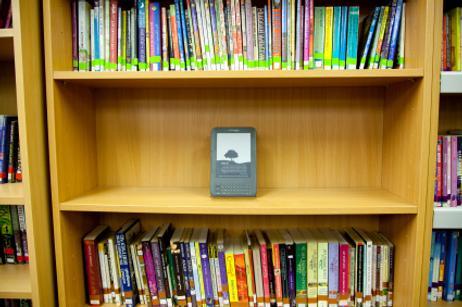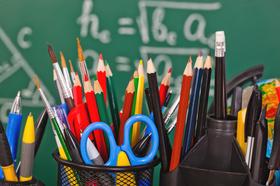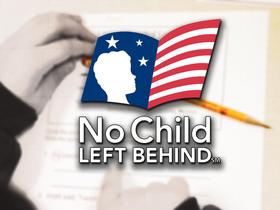E-books, some say, are the words of the future. The Kindle, the iPad, and other electronic reading devices are signaling the end of the print era.
Colleges and universities across the country have begun experimenting with using e-textbooks, rather than printed textbooks, to deliver course content. Now, the K-12 public school system is getting on the e-text bandwagon too, as several state legislatures make moves to support the use of electronic textbooks in their stateŌĆÖs public schools.
This video from Fox News reports on ebooks versus physical textbooks.
States Move to Adopt Digital Textbooks
Texas
In Texas, for example, the legislature adopted a bill in 2009 that provided funds for school districts and charter schools to purchase the technology necessary for e-textbooks. This bill also gave school districts and charter schools the necessary flexibility to adopt e-textbooks instead of traditional textbooks.
The bill also allowed school districts to be reimbursed by the state for 50% of the savings they incurred from the switch from regular textbooks to e-texts. As Texas Senator Jeff Wentworth reports in a guest column for the website , school districts may use the reimbursement they receive from the state to purchase educational technology, such as computers, if they choose.
Indiana
Twelve schools in the Indianapolis Public School System will soon be foregoing traditional textbooks as well. As the educational technology publication reports, the twelve schools selected will get to participate in a pilot program in which textbooks are replaced with digital content provided by Discovery Education. Teachers in participating schools will also receive professional development training, and the schools will be provided with the necessary hardware to utilize the new learning medium.
Michigan
Meanwhile, Detroit public schools recently signed a $40 million deal with Houghton Mifflin Co. to provide their students with Houghton MifflinŌĆÖs Learning Village software, as reports. Learning Village is more than just a platform for digitized versions of print textbooks ŌĆō it is a software system that the Boston Globe describes as an ŌĆ£interactive classroomŌĆØ that allows teachers to assign homework and measure how well students have learned the material.
In this video, the Wall Street Journal reports on schools without physical textbooks.
California
CaliforniaŌĆÖs governor Arnold Schwarzenegger announced in June 2009 that he will be supporting the adoption of e-textbooks in California schools, which he believes will help save the state money. As the reported, Schwarzenegger explained his support of e-texts by saying, "Basically kids are feeling as comfortable with their electronic devices as I was with my pencils and crayons. Textbooks are outdated, in my opinion.ŌĆØ
Advantages to Digital Textbooks
Why are so many school districts moving away from print texts and towards e-texts? Digital textbooks offer several advantages over traditional books:
- Hyperlinking - Digital textbooks can make use of hyperlinks to direct students to sources of more information on a given topic or statement. Like Wikipedia articles, which encourage readers to click from one article to the next to satisfy their innate desire to learn more, digital textbooks can enhance studentsŌĆÖ learning by highlighting the connections between various topics and ideas.
- Updated information - A major advantage that digital textbooks have over print media is their ability to be frequently updated. As an analyst quoted by Enterprise Content Magazine notes, "If even one paragraph is wrong in a hard-copy textbook, the whole thing has to be trashed and reissued. One of the things that people like about digital textbooks is that there's no cost to updating incorrect info."
- Enhanced learning experience - Digital textbooks are not just words on a screen. They can include video clips, interactive quizzes to test studentsŌĆÖ mastery of content, audio clips to help students with foreign languages, and message boards in which students interact with a larger community. These kinds of digital learning experiences are important, educational technology enthusiasts argue because they mimic the types of experiences that students are engaging in during their free time.
- Budget-friendly - Digital textbooks may also have the advantage of saving public schools money. Traditional textbooks often have to be replaced because students lose or damage the books, and whole sets of textbooks must frequently be replaced due to the need for updated information. E-books, on the other hand, can be updated with little cost and do not suffer wear and tear from being carted around in studentsŌĆÖ backpacks.
Though traditional textbooks can still be found in K-12 classrooms across the country, this may not be the case several decades from now if current trends continue. As the Boston Globe reports, Judie Mathis Johnson, assistant professor in the Technology in Education program at Lesley University, is one of several experts who believe that textbooks are on their way out. Sales are down, and, according to Johnson, ŌĆ£Already, a few school systems have said, ŌĆśWeŌĆÖre locking up the textbooks. WeŌĆÖre only looking at digital products from now on.ŌĆÖ ŌĆÖŌĆÖ
Questions? Contact us on Facebook @publicschoolreview.















